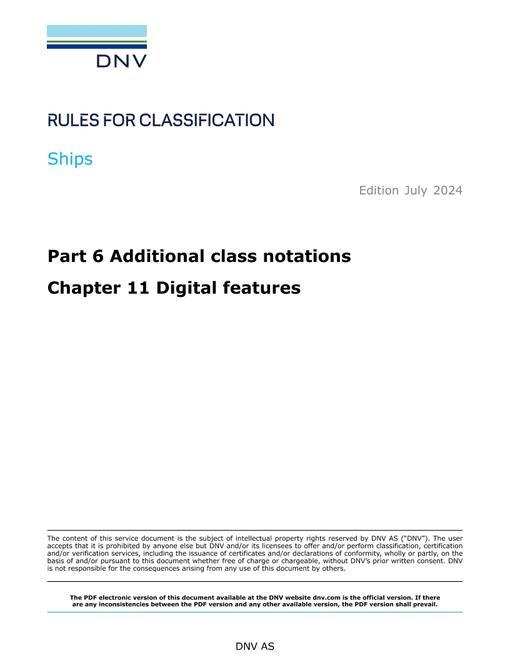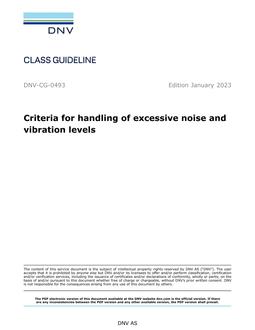-
-
Available Formats
- Availability
- Priced From ( in USD )
-
Available Formats
-
- Secure PDF 🔒
- Immediate download
- $57.00
- Add to Cart
-
- Printed Edition
- Ships in 1-2 business days
- $57.00
- Add to Cart
Customers Who Bought This Also Bought
-

DNV DNV-RU-SHIPS PART 6 CHAPTER 11
Priced From $57.00 -

DNV DNV-CG-0493
Priced From $57.00 -

DNV DNV-RU-SHIPS PART 7 CHAPTER 1
Priced From $57.00 -

DNV DNV-RU-SHIPS PART 2 CHAPTER 3
Priced From $57.00
About This Item
Full Description
This chapter summarizes all loads to be considered for the design of submersibles, unmanned underwater vehicles and underwater working machines.
Environmental conditions
The environmental conditions according Ch.1 are the basis for the calculations.
Use of actual loads
The following rules do not release the designer and the construction yard from the proof of the actual loads in each special case. If it becomes known during the design procedure that the actual loads are higher than in these rules, the effective loads shall be considered in the calculation and the causes for it shall be defined.
Load and test plan
All relevant loads for the different parts of a system shall be summarized in a load plan. From the loads defined in the following only the loads relevant for the actual case shall be considered.
As part of the load plan a pressure load plan shall be established which contains all pressures to be considered for the different parts of the construction. It shall be defined in which way the pressure tests shall be carried out.
It shall be defined for which components (e.g. diving/ ballasting tanks, battery spaces, pressure hull, etc.) underpressure tests respectively overpressure tests shall be carried out.
Definitions
Design Pressure
A pressure to which a pressure vessel is designed for.
Pressure for nominal diving depth
The nominal diving depth NDD [m] is the diving depth for unrestricted operation of the submersible or working machine. The nominal diving pressure NDP [bar] for this depth follows by multiplying the NDD value by 0.101 [bar/m] (see Ch.1 Sec.4 [2.1], if not otherwise agreed with the Society for special operations.
Pressure for test diving depth
The test diving depth TDD [m] is the diving depth to which pressure hull resp. equipment are exposed to external pressure under testing condition after completion or after main repairs and modifications. The test diving pressure TDP [bar], which has also to be included in the pressure load plan, is the pressure used for testing pressure hull resp. equipment for its strength, tightness and function. The test diving pressure TDP is defined in Sec.2 Table 1 and Sec.2 Table 2.
Pressure for collapse diving depth
The collapse diving depth CDD [bar] is the diving depth decisive for the design of the pressure hull. The collapse diving pressure CDP is the pressure for which the pressure hull will collapse under load without consideration of the creeping behaviour and the creep rupture strength of the material.
In general the collapse diving pressure can be chosen according to Sec.2 Table 1 and Sec.2 Table 2. Deviating factors for the collapse diving pressure may be agreed with the Society case by case.
Pressures for calculation
a) For pressure vessels which are not exposed to the diving pressure, the design pressure is equal to the maximum allowable internal working pressure PB. (see Sec.4 [1]).
b) The additional layout pressure for vessels and apparatus which are exposed to the diving pressure is 1.1 times the collapse diving pressure CDP for manned submersibles.
c) Design and layout pressure are not decisive for the fatigue strength, decisive is the maximum pressure occurring during operation which means the nominal diving pressure NDP.
Test pressure
a) The test pressure is the pressure for the proof of strength.
b) The test pressures are defined in Sec.4
Document History
-
DNV DNV-RU-UWT PART 3 CHAPTER 2
Part 3 Pressure hull and structures - Chapter 2 Design loads- Most Recent
-
DNV DNV-RU-UWT PART 3 CHAPTER 2
currently
viewing
Part 3 Pressure hull and structures - Chapter 2 Design loads- Historical Version
-
DNV DNVGL-RU-UWT PART 3 CHAPTER 2
Part 3 Pressure hull and structures - Chapter 2 Design loads- Historical Version
-
DNV DNVGL-RU-UWT PART 3 CHAPTER 2
Part 3 Pressure hull and structures - Chapter 2 Design loads- Historical Version





